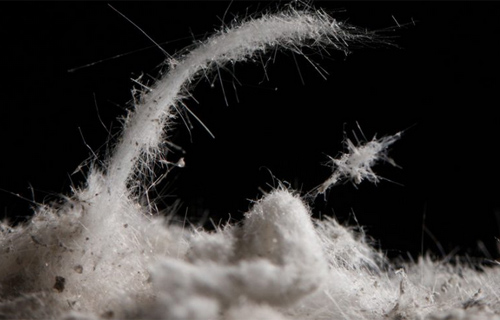Your Behavior in a Household with Asbestos

For a large period of the 20th century, a mineral called asbestos was making big changes in the construction industry, its versatile nature allowing it to be mixed in with other materials, improving the overall strength and durability of the compounds as well as increasing their resistance to fire. The substance was extracted from mines from all over the United States at a convenient price, its highly advantageous qualities and its wide availability earning asbestos the nickname "miracle mineral."
In no time, American households had asbestos insulation used for the protection of electrical wiring as well as for that of the piping system inside the house. The late 1970s brought to light the fact that asbestos was extremely toxic for the health of those that interacted with it either first hand or indirectly. The discovery led to heavy regulation in regard to the use of the mineral.
Currently, any product in the United States that contains under 1% asbestos is by law considered safe to use, although many watchdog organizations have been actively trying to prevent the usage of asbestos entirely. The World Health Organization (WHO), for instance, is one such institution that stands by the affirmation that no level of exposure to asbestos should be thought of as safe.
When Asbestos Is a Threat to Your Health
It should be noted that the mineral is nothing to be feared when it is encased in an object, but it becomes dangerous when it is released into the air in its fiber form. Even though presently asbestos is banned from use inside the home, there are older buildings that have a high possibility of containing asbestos insulation or cement, or other materials that were embedded with the mineral that have become worn out over time creating asbestos dust. For example, the thermal insulation in an older home might be falling apart due to the vibrations of the pipes, crumbling and creating toxic dust that can easily be inhaled and spread around the house by means of clothing and hair.
When breathed in, the tiny fibers can reach the lungs and start creating an irritation that cannot be combated by the body on its own since it lacks any sort of defense mechanism against the fibers. The threat the mineral poses to the health of individuals is significantly increased by the fact that there are no clear-cut signs that would make the person that has faced asbestos exposure suspicious of the fact that there might be something seriously wrong with them.
Asbestos-related diseases have long latency periods and they also have symptoms that could easily be interpreted as announcing many other illnesses, not as life-threatening as those caused by the sharp fibers. Lung cancer, asbestosis and mesothelioma are the deadliest conditions caused by exposure to the substance that have often been diagnosed correctly too late for any consequential treatment options.
How to Stay Safe from the Asbestos in Your House
People living in buildings that have been constructed before the 1980s have to seriously consider the possibility of having asbestos in their home and avoid making the mistake that many homeowners and individuals that have worked with asbestos, in general, have made before, i.e. coming to the conclusion that simply because they cannot see the substance, it means that the mineral is not there.
The untrained eye should not engage in the task of identifying the mineral and even more when their living space and well being are at stake. An asbestos professional would be able to safely perform an inspection that would not endanger anyone in the process and they can also use the findings to help the homeowner further formulate a plan. The actions following the house inspection are highly dependent on what the asbestos contractor discovers on-site, with the focus being on the general condition of the materials that tested positive for asbestos.
If you are certain that the building in which you live does contain asbestos but you do not wish to get a professional involved, there are a few things that you could do to minimize the exposure, such as:
- always act prudently in the areas that you suspect might have the toxic mineral - keep any activities at a minimum in said spaces, not allowing children or pets to spend time there, moving any objects of value or items that are routinely used in a different storage space and even sealing the windows and doors of the place in question from the rest of the house.
- wear protective clothing if you need to do repairs in a space that you know has asbestos in it - the coveralls should be disposed of at the end of the workday and replaced with new ones each day the reparations are resumed. You should also wear a HEPA respirator with cartridges that are appropriate for hazardous substances so that if asbestos is disturbed, you will not inhale the damaging fibers.
- if you have to make direct contact with asbestos-embedded items, you should keep them dampened the whole time - even wet down the disposal bags containing the asbestos waste as they are being prepared for transportation to an authorized landfill. You should also avoid throwing the objects at the ground and instead just lower them to avoid breakage and the creation of dust. It would also be best if you could only fill half the bags with asbestos waste to avoid them ripping apart.
